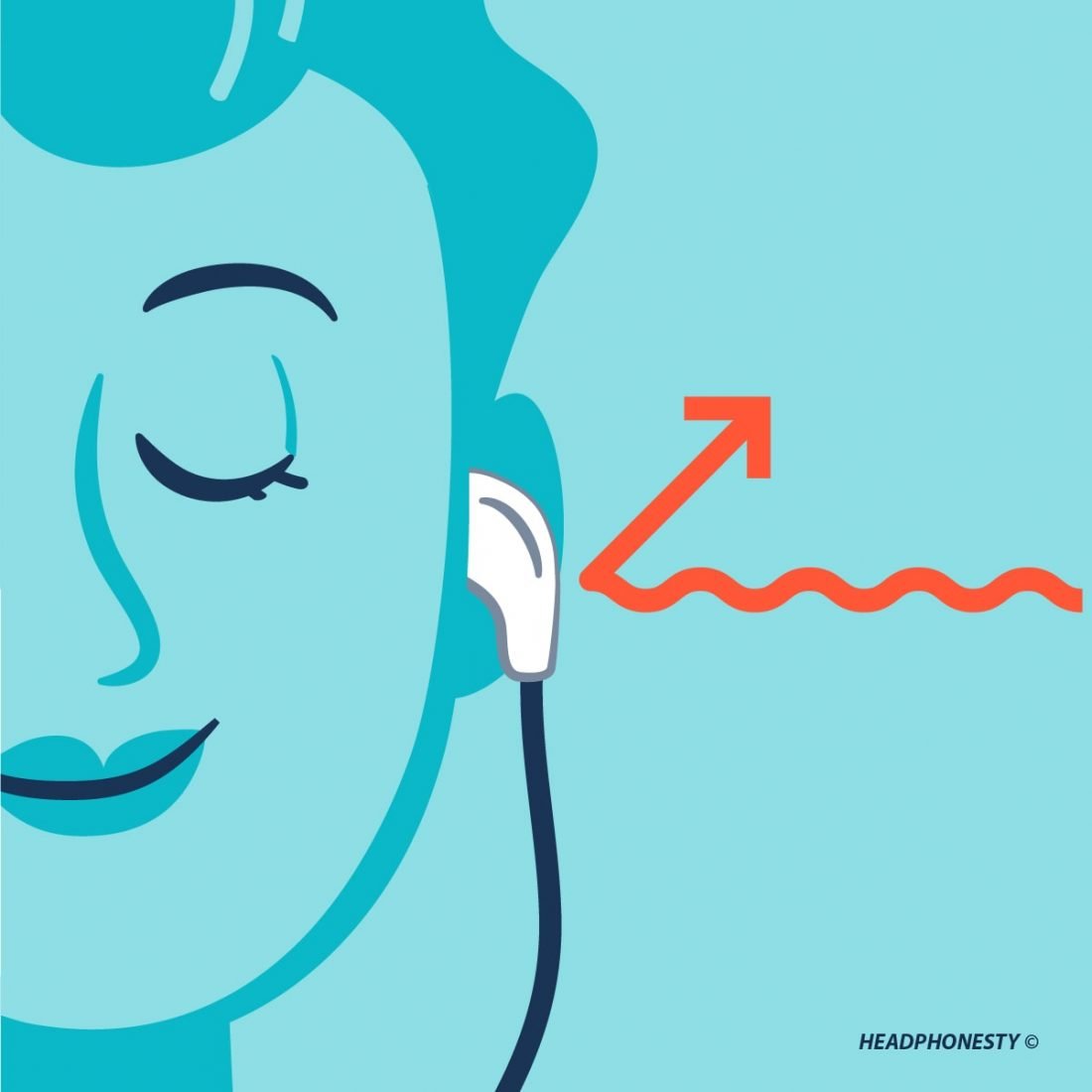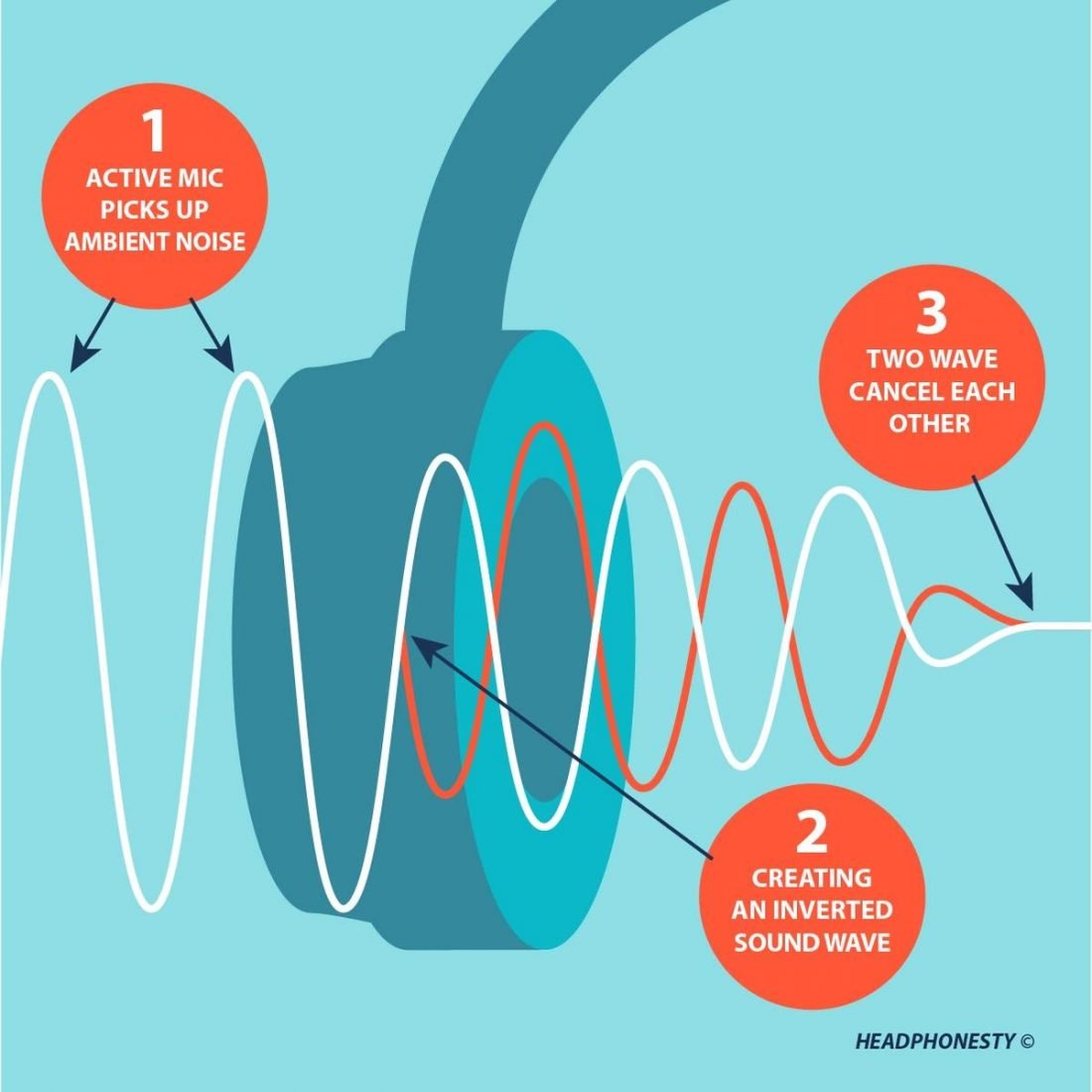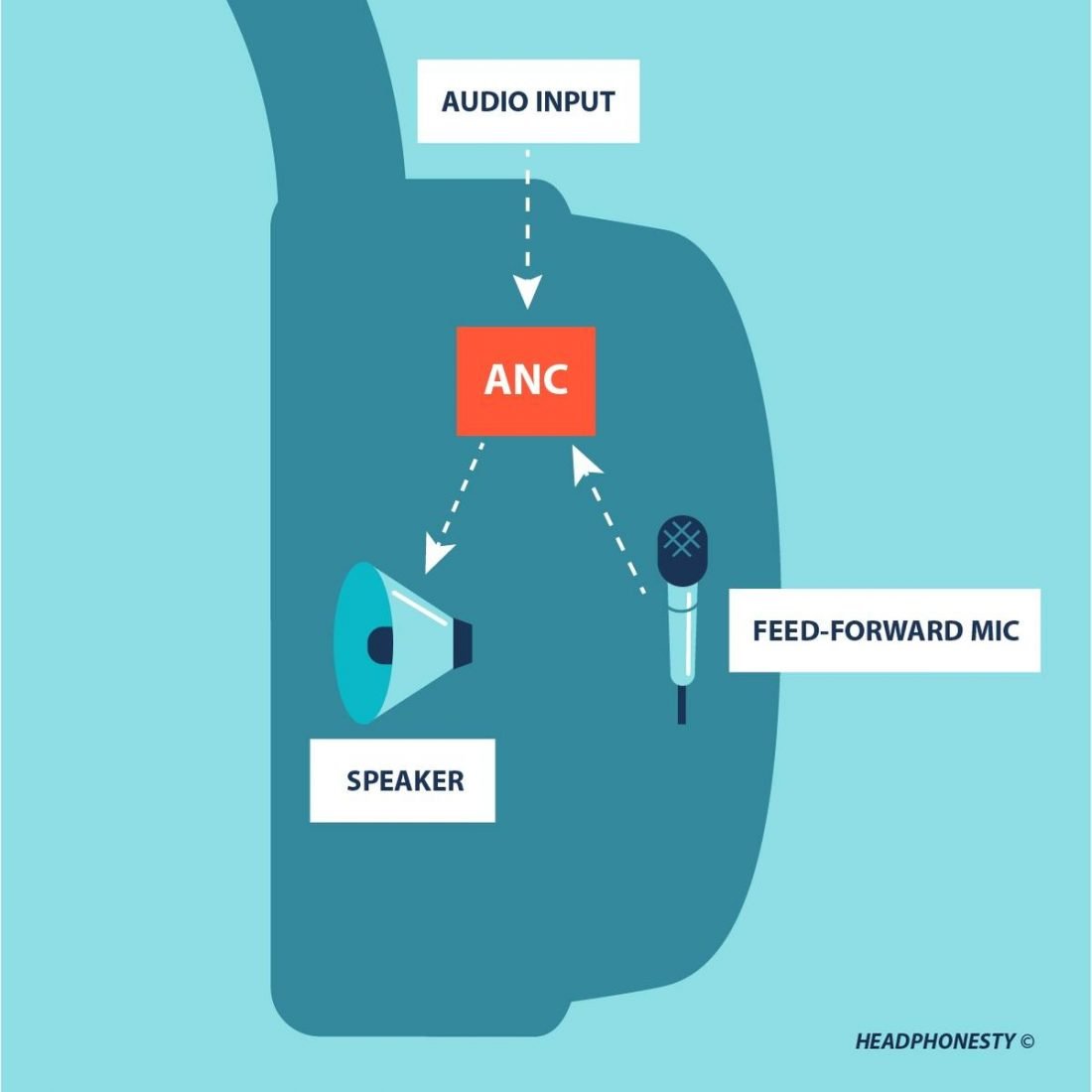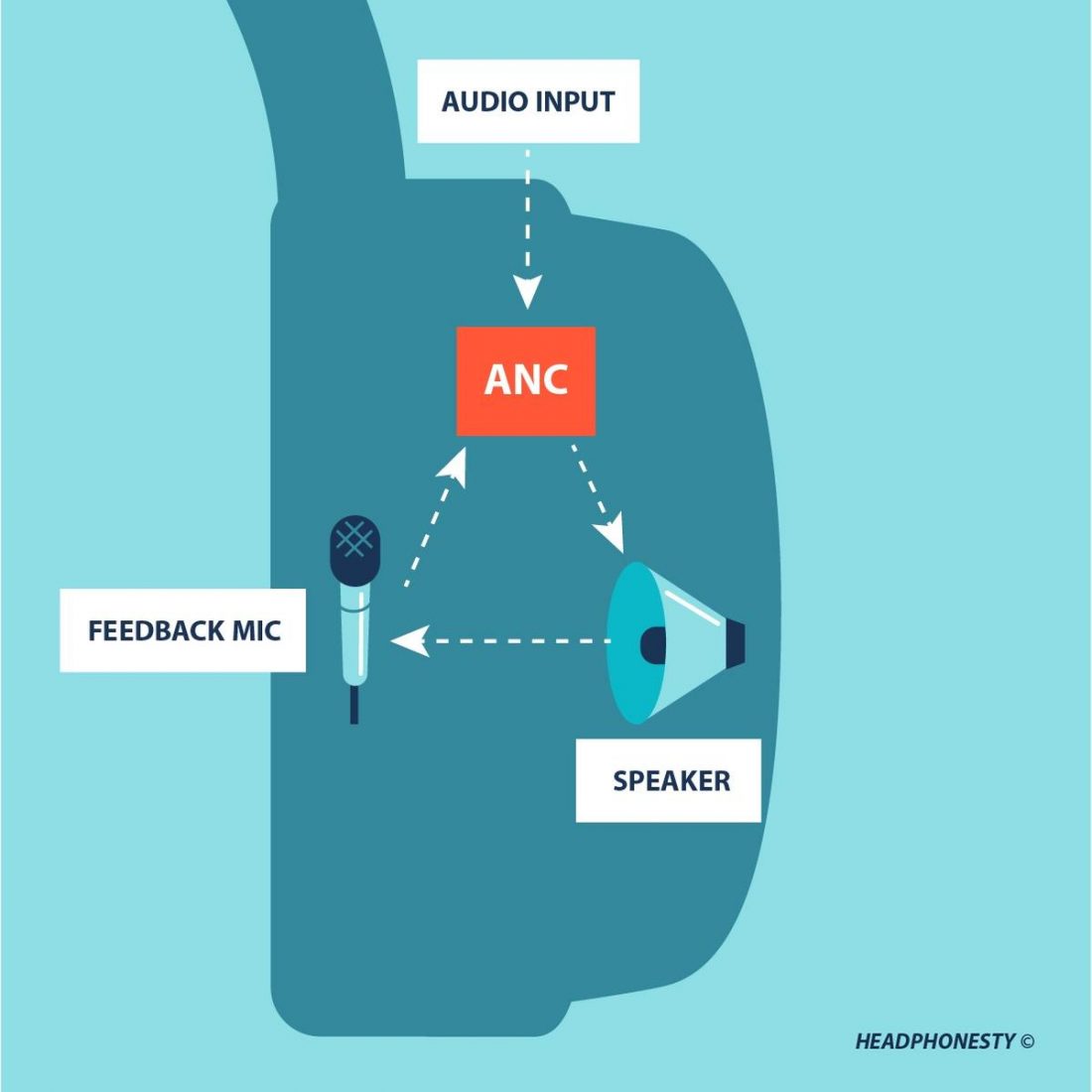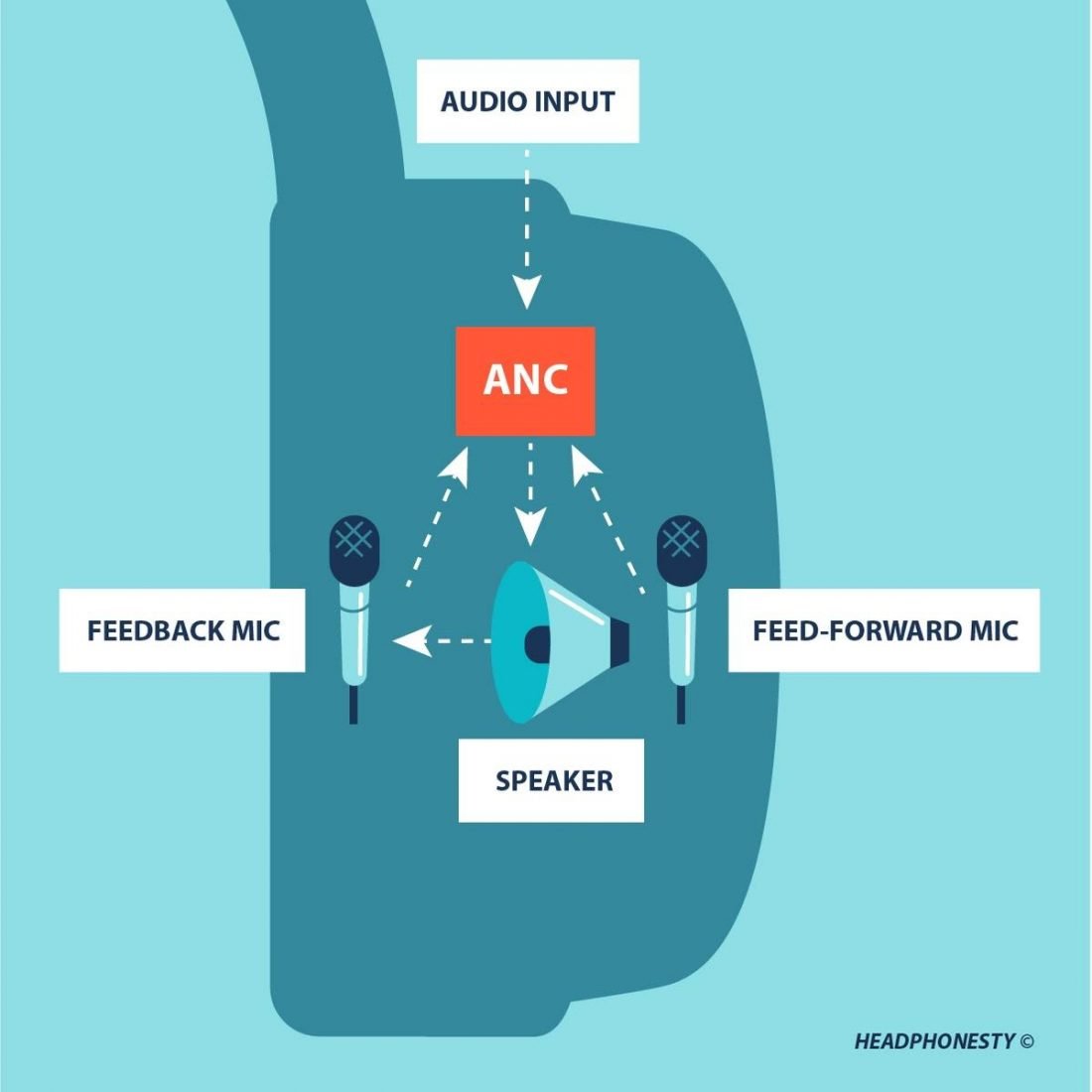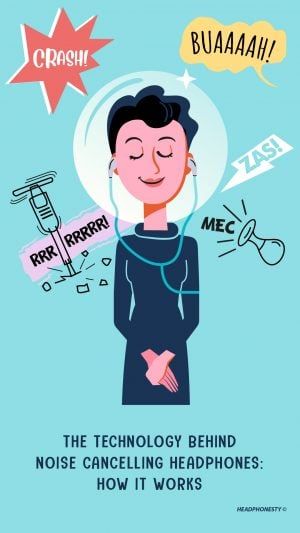I remember the first time I tried a pair of active noise canceling (ANC) headphones. With the ANC mode on, my surroundings immediately sounded a lot quieter, cutting off most of the ambient sound around me. I thought it was pretty cool — but more importantly — useful, both for distraction-free listening to music on the go (inside trains and buses) and as a tool to help me focus while working. And while I never pulled the trigger into getting one (it was too pricey back then), I’ve always been kind of amazed by how it worked. In this article, we’ll uncover the technology behind noise-cancellation: how it works, and the different types of methods used to reduce ambient noise. We’ll also learn why and how it can be useful in a variety of situations. So if you’re ready, let’s first examine why noise reduction could be beneficial —- and in some cases — crucial, in our everyday lives.
More Than Just Annoying: The Negative Effects of Noise
Exposure to constant noise is detrimental to both our productivity and personal health. If left unchecked, it could cause serious issues in the long run and negatively affect our work performance. Here are some of the most common negative effects of too much noise exposure:
Hearing damage
Decibel (dB) is the unit used to measure the intensity of sound. In general, people use it to describe the level of loudness. According to the World Health Organization (WHO), maintaining environmental noises to below 70 dBA is recommended to prevent any noise-induced hearing loss. And noises above 120 dB, like nearby sirens and firecrackers, can cause immediate hearing damage.
Speech interference
Excessive noise affects how we can perceive and understand speech. Have you tried talking to someone at a concert, a bar, or near a fast-moving train? Pretty hard, huh? When oral communication is affected, it’s both annoying and frustrating. It also leads to an increased risk of error caused by miscommunication and reduced efficiency at work and in our daily lives.
Decreased productivity & concentration
A British study revealed that exposure to noise could lead to a decrease in accuracy by as much as 67%. When reduced to recommended levels, the workers showed improvement in memory and accuracy tasks by 10% as well as an inability to focus by as much as 48%.
Psychological disorders
Elevated levels of noise aggravate us by inducing higher levels of stress. Depending on the intensity, it could lead to both physiological and psychological excitation that is reflected through irritation and annoyance.
Sleep problems
Excessive noise triggers our body’s flight or fight response, which leads to all sorts of reactions and physiological responses. So instead of the body being primed for relaxation, it feels restless and stressed, leading to sleeplessness.
Additional risk of cardiovascular diseases
The reasons stated above could of course lead to other physical ailments, potentially of the cardiovascular kind. The lack of sleep and higher levels of stress is bad for the heart, so consistent exposure to undesirable noise levels should be avoided.
What Is Noise-Cancellation?
Noise cancellation is the process of reducing unwanted background and ambient sounds through the use of passive and active noise control methods. Noise-cancelling headphones were originally made for airplane pilots for dealing with noise and improving comfort during long flights. And on a related note, the first consumer versions were made for people who also board airplanes often: travelers. Since then, noise-canceling headphones trickled down to the mass market as more people found it useful in a variety of situations.
How Do Noise Cancelling Headphones Work?
Let’s take a closer look at how each one works and how they differ in terms of implementation and effectiveness.
Passive noise cancellation
Before the inception of Active Noise Cancellation, the only way that ambient sound can be reduced was by putting a physical barrier between the ears and the environment. Headphones are naturally designed to enclose the ears to muffle ambient sound so you can clearly hear the audio coming from the source. For headphones, the ear cup size, clamping force of the headband, padding, fit and the design used are factors that contribute to its ability to block out sound. A circumaural (full-size) design that encloses the entirety of the ear and with ear cups that are made with multiple layers of high density foam are your best bet for passive noise reduction when it comes to headphones. In-ear monitors (IEMs) and earbud-type earphones are considered better in blocking ambient noise since they generally provide a better seal. The type of earphones, ear tip material, style, and fit determine how well it can passively reduce background noise. In fact, passive noise cancellation is so simple, you can actually upgrade the noise isolation of your headphones or earphones even without much technical knowledge.
Active noise cancellation
While passive noise cancellation minimizes ambient noise by creating a “physical shield” to muffle sound, ANC takes a different approach by “neutralizing” incoming sound waves from your surroundings. ANC headphones are equipped with tiny microphones that emit sound waves of opposing signals to that of incoming sound waves from your environment, thus canceling each other out. It’s like adding +3 and -3, where the resulting value is zero (silence). Here’s a closer look at how it works: An ANC setup consists of a chipset, a speaker, and a set of feedback microphones. With ANC activated, the microphones pick up sound from both inside and outside the headphones. Now that the type of incoming sound signals is determined, the ANC chipset will run algorithms that will invert the sound waves and release an opposing signal to cancel out the incoming ones from the environment.
Types of active noise cancellation
Now that we know the core principle used to reduce and block unwanted noise via ANC, it’s time to get to know the different types and settings for executing them.
Feedforward ANC Feedback ANC Hybrid ANC Adaptive ANC
Feedforward ANC
This setup has the feedback mic installed on the outer side of the ear cup. When incoming noise is detected, the ANC system produces opposing signals that are played through the headphones’ speakers. Since the mic is outside, it’s faster at picking up and responding to ambient noise. However, trade-offs include not being able to self-correct (since it’s not able to listen to the noise-canceling signal the ANC chip creates) and covers a narrower range of frequencies compared to its counterparts.
Feedback ANC
In this setup, the feedback mic is inside the ear cup and placed in front of the speaker, allowing it to hear the resulting signal as the listener hears it. The result is that it can adapt better to variations in sound and make the necessary adjustments. One disadvantage, however, is that it lags behind feedforward ANC when it comes to blocking noise within the 1-2 kHz range.
Hybrid ANC
This is considered an improvement over both feedforward and feedback ANC as it combines the strengths of both but without the cons. It uses two mics, one outside and one inside so the ANC algorithm can react faster and more accurately. It also covers more frequencies across the spectrum. The main drawback is that it’s significantly more expensive (usually twice the price) than the other two ANC systems.
Adaptive ANC
The new kid on the block, Adaptive ANC is developed by chip-maker Qualcomm. It operates using the same concept of hybrid ANC (adapts to the environment) but boasts of better sound quality, longer battery life, and a natural leak-through feature that lets you hear what’s going on around you by automatically adjusting the level of noise-canceling to adapt to your surroundings. You can start seeing this technology in ANC headphones under $200.
Noise cancellation in headset microphones
Aside from the noise-canceling action happening on the ear cups, the technology is also present in the headset’s built-in mic. It’s pretty helpful in ensuring that your voice is heard loud and clear. Manufacturers consider the mic’s shape, positioning, and digital signal processing capabilities to reduce unwanted sound from being heard by the other person when you’re talking. More sophisticated models employ the same settings and concepts we’ve discussed above. Using multiple mics, one focuses on picking up your voice while the other is dedicated to picking up ambient sound. Opposing signals are then generated to cancel out unwanted audio while highlighting your voice at the same time. This results in better audio quality and clarity.
Are Noise Cancelling Headphones Worth It?
Quick answer: It depends. People who are constantly exposed to undesirable noises (living in loud areas, working in noisy environments, etc.,) may find great value in noise-canceling headphones, whether they go for passive or active noise cancellation. Work-from-home individuals can use it to drown out common household noises so they can focus on their work. Students can use noise cancelling headphones to boost their focus both at home and at school. If you’re someone who puts a premium on privacy and ability to focus, or maybe someone who simply wants to enjoy some peace and quiet no matter where you are, then getting a pair of noise-canceling headphones could be a great idea.
Benefits of noise-cancelling headphones
And to help you decide if it’s for you, let’s take a look at the actual benefits you can get from using noise-canceling headphones.
Protects your health
We’ve discussed earlier some of the real-life issues that may stem from constant exposure to noise. Aside from protecting one’s hearing, using noise-canceling headphones could help reduce unwanted noise, which can help users in getting better sleep and reduced anxiousness and stress. Additionally, noise cancelling headphones are actually more recommended for kids since they are more prone to hearing damage as their developing ears tend to amplify noise to a greater degree.
Aids concentration
The absence of distracting noises helps us concentrate so we can produce better results both at work and at school.
Clearer audio
No matter how extravagant your headphone drivers are, if the ambient noise continuously mixes with the audio, you still can’t expect a great experience. That’s why noise cancelling headphones are known to provide clearer audio. This is very important especially if you constantly use your headsets for work, for school, or for leisure. Having this means you can understand lessons, audiobooks, and podcasts better and be free of noise that disrupts the listening experience. Noise cancelling headphones are also great for gaming since these can help you immerse in your own world inside the game.
Better call conversations
Most noise cancelling headphones also have their own noise cancelling technology for headphone microphones. This means the person you’re talking with can hear your clearly despite the noise. With better audio (both for listening and speaking), we can have more engaging conversations with other people. It’s simply a much better experience versus having both parties get annoyed and disinterested because they can’t understand what the other person is saying.
Drawbacks of using noise-cancelling headphones
It’s not all sunshine and roses though when it comes to using these types of headphones. Like everything else, it comes with its own set of cons that we should be mindful of before getting one.
More expensive
Noise-canceling headphones are generally more expensive as they’re built with the components needed to effectively reduce ambient sound. However, you can see some decent ANC headphones at relatively low prices. Although these won’t compare to higher-priced models, these still have noticeable noise reduction capabilities that’ll do the trick.
Requires more power supply
All the electronic components used to minimize and block out sounds require power to run. It means more juice is required for these things to operate. However, even with all the electronics running, it’s quite normal for modern ANC headphones to run anywhere for 4 hours or more on a single charge, enough juice for most users before having to charge it.
Can block important sounds
It’s not advisable to wear ANC headphones in some situations as it could end up blocking important sounds from your surroundings. When you’re driving or taking care of the kids, for example. Try to avoid using noise-canceling headphones in scenarios wherein your safety and the safety of people around you can be affected by your ability to hear your surroundings. If you think it’s unavoidable, you can opt to go for noise cancelling headphones with Ambient Mode, or even those with adjustable ANC levels.
May affect sound quality
A big part of the design, construction, and electronic consideration in creating ANC headphones are dedicated to blocking out the sound. All that tech and processes running in the background may take some of the focus away from producing the best possible sound that the headphones can produce. In addition, since ANC headphones essentially samples surrounding audio and outputs an opposing signal to the speakers, the sound quality might end up feeling unnatural and less than optimal compared to regular headphones. However, manufacturers have continuously addressed this issue. Some premium noise cancelling headphones have also integrated artificial intelligence to automatically adjust the sound quality depending on the song or the level of ANC.
Conclusion
Noise-canceling headphones, particularly the ANC-type, could be useful in a variety of situations. Plenty of advancements have been made in ANC tech in the last few years and more manufacturers are churning out headphones that not only sound good but can effectively block out noise as well. Hopefully, this leads to lower prices so more people can enjoy the benefits of using noise-canceling headphones.
